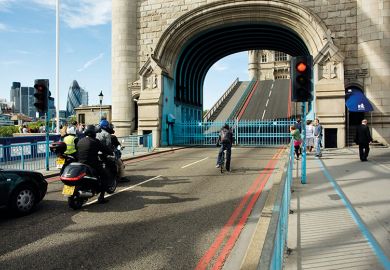I have always assumed that the end of the year was called the festive season only because it was the last chance of a decent meal before a long period of near famine. It seems unlikely that anyone in the northern hemisphere found their spirits lifted by short days, long nights, cold winds, snow and rain. Feasting was an antidote to gloom, much as the celebrations of the solstice were a desperate attempt to persuade the sun to return. However that may be, the end of 2014 turned out to be strikingly unfestive, not uniquely on US campuses, but there, too. As so often in America, it’s the politics of race that causes the misery.
The reaction to the failure of grand juries to hold police officers accountable for the choking death of Eric Garner on Staten Island, New York and the shooting death of Michael Brown in Ferguson, Missouri has not been violent on campus, as it was in the streets of Ferguson itself and in a few other places. Oakland has a long history of bad relations between police and the African American community; although things have improved in the past few years, it takes very little to spark trouble, and these cases have done it. But the events themselves have caused immense distress, perhaps because things seemed to be looking up.
The federal government has been giving away surplus military equipment to local police forces; there are campus police forces that possess armoured personnel carriers as a result
Police violence towards African Americans is a very old story; I first arrived in the US, just after riots in Newark, New Jersey left 26 dead, mostly African Americans shot by the police and National Guard. But the late 1960s were an insecure time generally, and the Newark shootings were not an exception. Watts in 1965 and Detroit in 1967, the same year as Newark, are still landmarks in the modern history of race riots and heavy-handed repression.
But they were half a century ago, and everybody hoped that we had moved on. Our present decade is politically acrimonious, and far too many people get shot one way and another – including mothers by toddlers who have picked up a loaded gun from under the bed – but nobody is bombing university laboratories, and nobody is murdering civil rights activists, and the US Air Force is not unloading napalm on Asian villagers. The American murder rate reflects the fact that Americans are well-armed, not that the society is uniformly violent. And the overall crime rate has been falling for years. Nonetheless, the US police kill a lot of what they call “civilians”, a term that says a great deal about the frame of mind in which the police operate: in many places as something like an army of occupation. In 2013, reportedly 406 “civilians” were killed by US police; the year before, the British police did not kill anyone.
The distress caused by the killings in Ferguson and Staten Island has its upside. For one thing, it reminds everyone of how racially divided the US remains. A black youth is 21 times more likely to be shot by a cop than a white youth. There are plenty of Americans who think that that is because young black men are at least 21 times more likely to cause death and injury to their fellow citizens – who knows if that includes the 12-year-old Tamir Rice shot by a Cleveland cop last month because he was playing with an airgun? The cop in question had previously been declared unsuitable for police work because he was “emotionally immature”.
If we discount the possibility that being an African American makes one 21 times more prone to violent crime than one’s paler fellow citizens, all sorts of interesting questions arise, to most of which the answers are pretty depressing. One is about what can loosely be called police culture. Another is about the representative or unrepresentative quality of the police. Yet another is about the “grand jury” procedure under which a prosecutor presents a jury – “grand” as in being “large” or having more members than the usual dozen – with the evidence that may justify prosecution and asks them for an indictment. In more than 90 per cent of cases, the prosecutor gets the indictment he seeks; police officers are never indicted. If they “feel” threatened while on duty, that’s enough to justify homicide. The rationality of their judgement is not questioned.
You can see why the old slogan “No justice, no peace” was dusted off once more. To a foreign eye, one of the oddest things about the confrontations between the police and protesters was the amount of military kit that local police forces brought to occasion. The federal government has been giving away surplus military equipment to local police forces; there are campus police forces that possess armoured personnel carriers as a result. I don’t suppose that anyone intends to use them for anything serious, but if you are long in the tooth, it is a strange sensation to see the kind of thing you once saw in Soweto or Belfast on the campus of the University of Central Florida or one somewhere in Indiana.
It’s all the odder when you think that the other of the autumn’s miseries on campus has been a drawn-out wrangle about fraternities and sexual assaults. The University of Virginia was humiliated by an article in Rolling Stone that accused seven young men of raping a young woman in a fraternity house; then Rolling Stone was humiliated when it emerged that the story was less than wholly true – whether it was wholly false hasn’t emerged. One wonders how much use campus cops with heavy machine guns and water cannon are in persuading drunken and over-excited young men that “No means No”.





